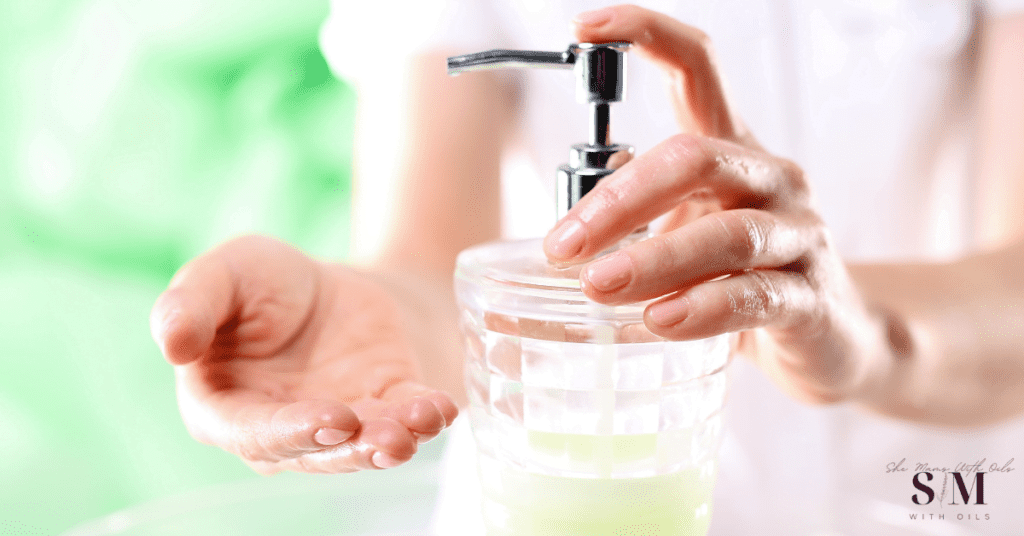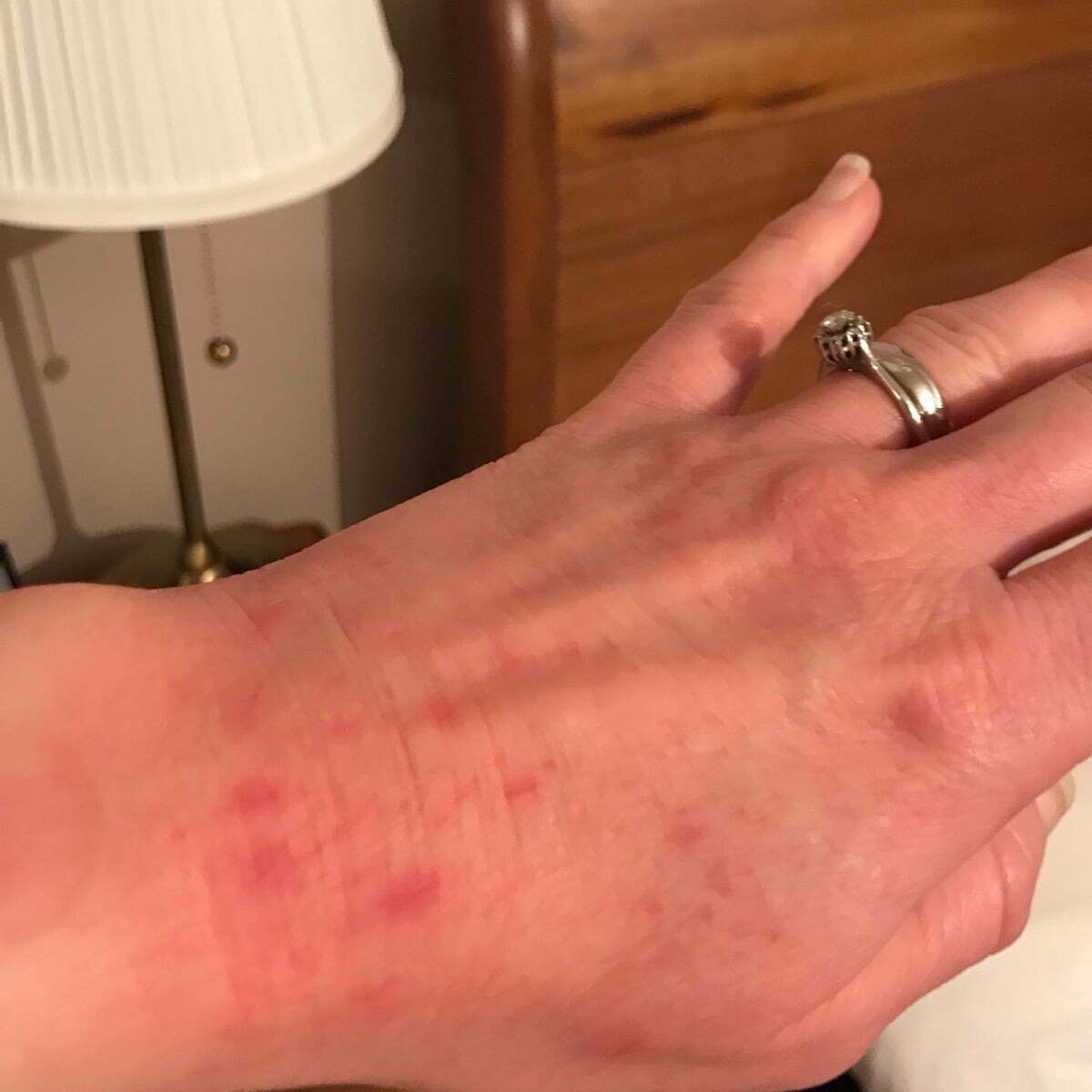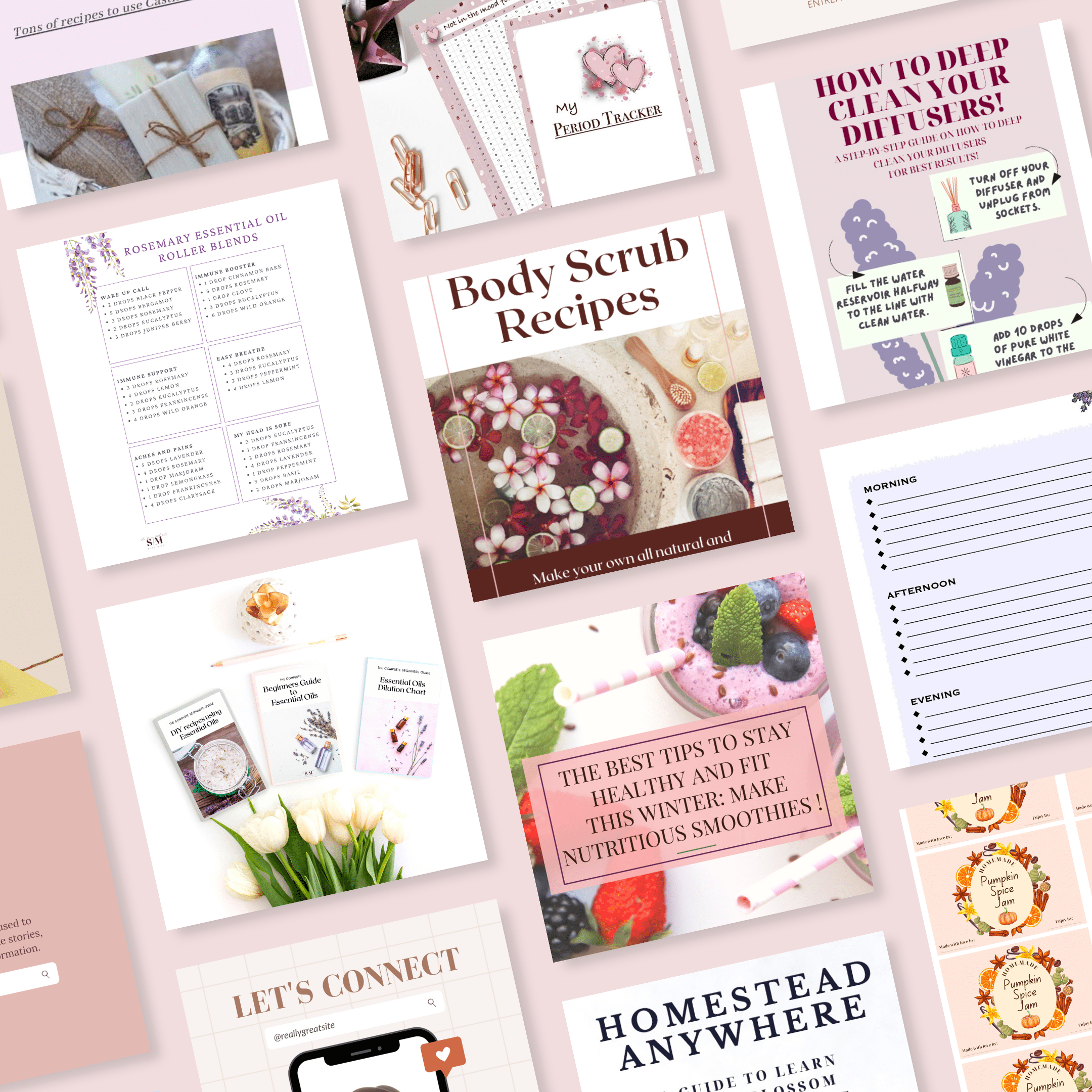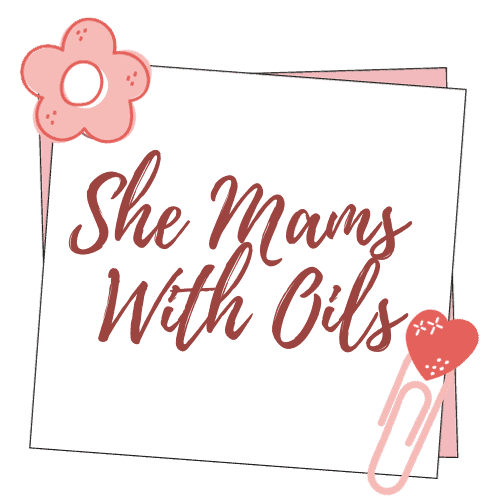BEST DIY NATURAL NON TOXIC HAND SOAP
BEST DIY NATURAL NON TOXIC HAND SOAP AND HAND SANITISER.
If you are tired of buying commercially produced antibacterial soap because you are aware of the possible dangers associated with them, I have good news: there are natural options out there.
In this post, you will find the best and easiest recipes to make your own DIY, natural, and non toxic hand soap and hand sanitiser.
Use only natural ingredients to protect your family, and save money at the same time.

______________________________
The following post contains affiliates, which means I’ll get a small commission if you decide to buy using the links provided. This will add NO EXTRA COST to you but it helps me to keep this blog up and running. Thank you. You can get more info by reading my Disclaimer page.
Hello to you reading this post!
If you have come to this page is because you are searching for the best DIY natural and non-toxic hand soap recipe.
Good thing I have just the one for you!
Also, read till the end to find my best tips on how to make an effective and safe hand sanitiser.
is antibacterial soap bad for your skin?
The first thing I want to tell you is something that happened to me recently.
I always use my own nontoxic DIY hand soap, using only natural ingredients.
However, a few weeks back I run out of everything. Because of that, FOR ONE DAY ONLY I was forced to use a shop-bought product.
Well, the picture speaks for itself!

After one day only my hands were in such a terrible state, with dry and cracked skin, bleeding and sore to the touch.
Looking at the state of my hands is a painful reminder of how store-bought, conventional hand soap is loaded with harsh chemicals and harmful ingredients. They can do damage to your body, as they penetrate through your skin.
When your skin is dry and cracked, and just in need of a bit of TLC, you can use any of the recipes I share with you in this blog post. Don’t forget to grab the FREE EBOOK with all the recipes!
what ingredients are in antibacterial hand soap?
Let’s have a look at some of the ingredients that are used commonly in the soap brands you can buy at your local grocery store.
FROM “dontwasteyourmoney.com”:
“Here are the top three ingredients in chemical hand soaps:
- Parabens: Manufacturers use parabens in their soaps as a preservative. Unfortunately, this ingredient actually disrupts the endocrine system, messes with your hormones, and can even cause breast cancer. It may surprise you to learn that countries like Denmark have actually banned the use of parabens.
- Sulfates: Sulfates actually cause skin irritation, as they are commonly used as pesticides and herbicides. Do you really want to use a product to clean your hands that also kills plants and pests?
- Artificial Fragrances: To produce a pleasant scent, most chemical hand soaps utilise artificial fragrances. These synthetic scents typically contain ingredients that can cause allergic reactions, headaches, respiratory issues and even brain fog.”.
Scary, isn’t it?
Think about how many times a day you wash your hands, especially in the last year and a half.
Do you really want to expose yourself or your children to toxic ingredients, artificial colours, harmful chemicals, and synthetic fragrances that can cause endocrine disruption?
IS ANTI BACTERIAL SOAP BAD FOR YOU?
From “smithsonianmag.com”:
”As the FDA recently noted, antibacterial products are no more effective than soap and water and could be dangerous.
About 75 percent of liquid antibacterial soaps and 30 percent of bars use a chemical called triclosan as an active ingredient. The drug, which was originally used strictly in hospital settings, was adopted by manufacturers of soaps and other home products during the 1990s, eventually ballooning into an industry that’s worth an estimated $1 billion. Apart from soap, we’ve begun putting the chemical in wipes, hand gels, cutting boards, mattress pads, and all sorts of home items as we try our best to eradicate any trace of bacteria from our environment.”
The main points you can learn from this article are:
is antibacterial soap better than regular soap?
As mentioned in the article, 42 years of research from the FDA, along with many more independent studies, have produced no evidence that triclosan provides any health benefits compared to regular soap.
How might the use of antibacterial soaps increase antibiotic resistance?
Antibacterial hand soaps have the potential to create antibiotic-resistant bacteria.
This is cause for concern in modern medicine, as extensive and often unnecessary use of antibiotics could lead to the creation of “a small subset of a bacteria population with a random mutation that allows it to survive exposure to the chemical. If that chemical is used frequently enough, it’ll kill other bacteria, but allow this resistant subset to proliferate. If this happens on a broad enough scale, it can essentially render that chemical useless against the strain of bacteria.”.
Hendocrine disrupting chemicals
Again, from the same article: ”A number of studies have found that, in rats, frogs and other animals, triclosan appears to interfere with the body’s regulation of thyroid hormone, perhaps because it chemically resembles the hormone closely enough that it can bind to its receptor sites. If this is the case in humans, too, there are worries that it could lead to problems such as infertility, artificially-advanced early puberty, obesity, and cancer. These same effects haven’t yet been found in humans, but the FDA calls the animal studies “a concern”—and notes that, given the minimal benefits of long-term triclosan use, it’s likely not worth the risk. ”.
From ”www.endocrine.org”:
You can watch this very helpful video. It is only about 2 minutes long.
This video can help you to better understand the risks connected to endocrine disrupting chemicals.
HEALTH RISKS OF ANTIBACTERIAL SOAP
“There’s evidence that children with prolonged exposure to triclosan have a higher chance of developing allergies, including peanut allergies and hay fever. Scientists speculate that this could be a result of reduced exposure to bacteria, which could be necessary for proper immune system functioning and development.
Another study found evidence that triclosan interfered with muscle contractions in human cells, as well as muscle activity in live mice and minnows. This is especially concerning given other findings that the chemical can penetrate the skin and enter the bloodstream more easily than originally thought. A 2008 survey, for instance, found triclosan in the urine of 75 percent of people tested.”
Antibacterial soaps are bad for the environment
“When we use a lot of triclosan in soap, that means a lot of triclosan gets flushed down the drain. […] Once in the environment, triclosan can disrupt algae’s ability to perform photosynthesis.”
ARE ARTIFICIAL FRAGRANCES HARMFUL?
The majority of the personal care products you can find at your local store (for example, body wash and body soap, shampoo, skin care products, etc.), contains synthetic fragrances. For the most part, you should avoid these substances at all costs, as they are harmful to our health.
Fragrance, also known as perfume, or “parfum”, is an umbrella term that can actually refer to hundreds of chemicals.
Unfortunately, manufacturers are not obliged by law to disclose what they put into that one ingredient, so they are literally free to use any toxin or harmful ingredient they choose.
Since you have no control over what’s used and labeled as “perfume” or “fragrance”, you should avoid those products altogether.
synthetic fragrance vs natural fragrance
Let’s go through the major differences between natural fragrances and synthetic ones.
Natural fragrances and synthetic fragrances are not the same thing
Synthetic fragrances are man-made, created in a lab. On the contrary, natural fragrances contain ingredients only of a natural origin. Generally speaking, they come from essential oils and botanical extracts.
The word “fragrance” on the ingredient list can hide up to 3000 chemicals!
From “eachandvery.com”:
“The FDA regulates that all beauty and personal care products list their ingredients on the back of the package. While this is a good step to ensure you know what you are putting on your body, sometimes those ingredient labels can be confusing and not completely transparent. The word “fragrance” has been protected in the industry for many years as a “trade secret,” meaning that companies do not have to disclose all of the raw materials that make up a fragrance.”.
On the other hand, natural fragrances such as lavender scent, exclusively come from plants. There are no additives and/or hidden ingredients.
SYNTHETIC FRAGRANCES POSE A RISK TO HEALTH
Artificial fragrances pose a health risk that you cannot underestimate. Due to a large number of hidden ingredients, consumers don’t know what’s inside any product containing perfume.
Natural fragrances, on the contrary, are not linked to health issues.
IMPORTANT:
If you suffer from any medical condition or allergies, always read the label before using any product. If unsure, always consult with your doctor.
NATURAL NON TOXIC HAND SOAP
Considering how often you wash your hands every day, it is advisable to opt for a natural product.
The best way to ensure you are not using toxins and harsh chemicals is to read the ingredient list before purchasing any product.
What should I look for in hand soap?
If you prefer to buy other brands of hand soap, there are a few things to consider beforehand.
INGREDIENTS
Always look for products that have ingredients derived from plants. Avoid sulfates and parabens. Look for natural options instead, such as essential oils, aloe vera, and shea butter for example.
SKIN TYPE
Your skin type naturally is one of the most important factors to consider when it comes to buying any product.
If you have dry skin, look for natural soaps with added moisturizing ingredients, like organic coconut oil, shea butter, cocoa butter, vitamin e, olive oil, etc.
If, on the other hand, you have sensitive skin, opt for a gentle formula. Most importantly, look for a fragrance-free product. Look for soaps that are effective at cleaning, but will not irritate your skin.
PRICE
As we all know, more often than not, organic, high quality products are expensive.
In my opinion, they are certainly worth the investment.
If at all possible, buy the best quality product you can afford. Shop around, and buy in bulk if you can.
DIY NATURAL NON TOXIC HAND SOAP
Given the frequent hand washing, you perform daily, making your own DIY natural non toxic hand soap could be a good idea.
By making a DIY hand soap you can:
- create a completely organic hand soap;
- mix a blend that suits all skin types;
- produce an eco-friendly hand soap;
- save money.
Let’s have a look at all of them.
DIY organic hand soap
By using only organic ingredients, you can create a totally organic and clean soap.
When purchasing the ingredients you will need, such as shea butter or aloe vera gel, look for the organic label.
Organic soaps made with organic ingredients are definitively the best choice when it comes to your health, as they are free from pesticides and chemicals.
Are natural soaps better for skin?
Even the most popular brand name doesn’t guarantee the product is formulated to suit your specific needs.
Meanwhile, DIY natural options give you total freedom.
When you make your own DIY natural, non toxic hand soap, you are in control of the ingredients you use. Hence, you can create the perfect concoction to suit your skin type.
How do you make hand soap environmentally friendly?
The added bonus when you make your own DIY hand soap is that it is also eco-friendly.
Firstly, there is very little use of plastic and packaging.
Secondly, natural ingredients are generally speaking biodegradable ingredients. Therefore, you will be helping keeping waste at a minimum.
Lastly, store bought personal care items require extensive use of water to be produced. On the other hand, you will not need much water to whip up your DIY natural handsoap!
HOW DO YOU MAKE SIMPLE AND CHEAP LIQUID SOAP?
When you make a DIY natural and non toxic hand soap, you are also saving a lot of money.
The ingredients you need, you can easily buy in bulk at your local health store or online, and they will last a very long time.
When it comes to essential oils, for example, because they are very concentrated and powerful, you will only need a few drops in your homemade soap.
THE BEST DIY NATURAL NON TOXIC HAND SOAP RECIPE
Here’s the recipe I use to make my own natural hand soap.
You will need:
- 1 x 200ml foaming soap dispenser;
- 200ml of cooled, boiled water;
- 20ml of Pure Castile Soap (any scent you like);
- 1 Teaspoon of Vitamin E oil or Fractionated Coconut Oil;
- 20 drops of Essential Oils in total (such as Lemon, Eucalyptus, Lavender, Wild Orange, Melaleuca, etc. ).
Thoroughly wash and dry the soap dispenser and fill it with water. Then, add the soap, Vitamin E oil, or FCO. Lastly, add the Essential Oils. Shake well before use. Discard any remaining product after 1 week max from the date of mixing.
How long should you wash your hands?
It is important to remember that, regardless of the product you use, the effectiveness of hand-washing depends on how long you wash for.
Washing your hands with warm water and soap for at least 30 seconds is sufficient to rid you of dirt and germs.
Whenever you don’t have access to water and soap, for example, if you are out and about, a good squirt of hand sanitiser can help you to disinfect your hands.
However, hand sanitisers can only disinfect your skin. They cannot clean your hands if you have touched anything dirty or sticky.
If you like everything DIY and would also like to try to make your own, homemade soap bars, using only natural ingredients, check this blog post!
You can customize your homemade soap bars 100%. Most importantly, they make wonderful gifts for family and friends.
HOW TO MAKE HOMEMADE SOAP FOR BEGINNERS USING NATURAL INGREDIENTS
DIY HAND SANITIZER SPRAY
In the last couple of years, we have all seen the world going crazy about the spread of new viruses.
At the very beginning of the current crisis, I remember it was almost impossible to put your hands on any hand sanitiser (sorry for the unintentional pun!).
As a consequence of the shortage of antibacterial sprays, people started creating their own products.
Although I always encourage people to look for homemade alternatives, when it comes to hand sanitisers, I would urge caution.
HOW TO MAKE DIY HAND SANITISER
Before attempting to make your own DIY hand sanitiser, let’s have a look at the main ingredients used in the majority of the DIY recipes I’ve seen.
The most common recipe I’ve seen doing the rounds calls for aloe vera gel, vodka (for the alcohol content), and a few drops of Tea Tree Oil (Melaleuca).
ALOE VERA GEL
The Aloe Vera Gel is used in this recipe for its moisturizing and soothing properties because the alcohol can be very drying for the skin. It is important though to buy a certified organic and 100% pure Aloe vera gel.
Furthermore, you will need the Aloe Vera if you want your homemade product to have a gel-like consistency.
VODKA – ALCOHOL
The alcohol content in the vodka can vary. However, it is on average 40% by volume. This amount of alcohol can act as a preservative if you are making your own hand sanitiser (so that it would not spoil too quickly). However, it would not be effective at killing bacterias. Regular, alcohol-based hand sanitisers contain between 60% and 95% of alcohol, the recommended amount to effectively kill germs. The higher the alcohol content, the higher the efficiency of the product. In other words, vodka will not kill germs, but will only make your DIY hand sanitiser lasts a bit longer.
TEA TREE OIL (MELALEUCA)
This is where most of the misconceptions arise. Unfortunately, our present legislation doesn’t protect consumers against big companies that produce and sell essential oils. Indeed, anyone can bottle up some liquid and sell it as essential oil!
As a consequence, many essential oils that you can buy in local stores or pharmacies are not 100% pure, even if the label says otherwise.
Those little bottles probably only contain a few drops of essential oils and the rest is added, hidden fillers and fragrances.
This is very important because if you are making your own hand sanitiser using Tea Tree oil thinking that your hands will be clean and disinfected, in reality, you will not be protected against germs.
That Tea Tree oil you buy in most stores isn’t pure. Therefore it has no disinfecting properties whatsoever.
Real, 100% pure Tea tree oil, on the other hand, may provide antibacterial and antiviral properties and can be used to make your own cleaning or sanitising products.
Before buying any essential oil, do your research, and only buy from a reputable company.
HOW TO MAKE DIY HAND SANITISER AT HOME WITH THREE INGREDIENTS
Here is a good recipe that you can use to make your own hand sanitiser.
Remember that this homemade product will not 100% protect you from viruses and bacterias.
In particular:
- always follow public health advice when it comes to protecting yourself and your loved ones;
- make sure to wash your hands thoroughly and frequently;
- observe social distancing and mask wearing as advised in your locality;
- follow coughing etiquette when among other people;
- if you are unsure about what to do and what symptoms to look for, always talk to your doctor.
INGREDIENTS (makes about 1 cup):
- 2/3 cup of rubbing alcohol (99%);
- 1/3 cup pure, organic Aloe Vera Gel;
- 20 drops essential oils (tea tree oil, lavender, frankincense, lemon, etc.);
- A spray bottle.
DIRECTIONS:
In a medium sized bowl, mix the alcohol and the essential oils. Gently add the aloe vera gel and mix well.
With the help of a funnel (optional) slowly pour the mix into your spray bottle.
When you need to use the hand sanitiser, spray on your hands and rub well, till your skin is dry.
IMPORTANT:
Make sure to avoid spraying on your face!
Only use this homemade product on your hands.
If you are looking for some advice on how to stay healthy this winter, I have shared my best tips on this post.
You can implement all my tips today, and they will cost you nothing.
HOW TO STAY HEALTHY DURING WINTER
BEST DIY NATURAL NON TOXIC HAND SOAP AND HAND SANITISER
During the last 18 months or so, we have been forced to learn about good hand hygiene, social distancing, and coughing etiquette.
In a time when we are all doing our best to keep ourselves and our family members safe, it is important to remember that store-bought and commercially produced body care items aren’t often a good choice.
They are filled with hidden ingredients and linked to health problems such as infertility, learning disabilities, and conditions affecting the brain to name a few.
The best option, in my view, is to look for natural alternatives.
As shown in this post, you can make effective hand soaps and a good quality hand sanitiser just using a few, readily available ingredients.
Let me know in the comments if you try my recipes!
Till next time, Dee.
IMPORTANT: When using Essential Oils, make sure to use only CPTG Certified, Pure, Tested Grade ones. The content of this blog post and any information provided here has not been evaluated by any government entity or medical practitioner. It is NOT intended to diagnose, treat, cure or prevent any disease, illness or condition. It is NOT intended to be a substitute for medical counselling. If you are pregnant, breastfeeding, or suffering from any medical condition or illness or injury, you SHOULD consult a qualified healthcare professional before using any product.
Hi, I’m Dee!
Mom of three; printables creator, natural solutions, simple living and homemade food enthusiast; “Outlander” fanatic.
When I’m not busy writing and designing, you can always find me covered in a cloud of flour in the kitchen, playing and crafting with my children, or making up some blends with my Essential Oils. Also I’m practically obsessed with Crystals and reading during my spare time.
Come along on our crazy journey as a family living in the countryside of Ireland!


